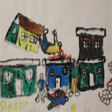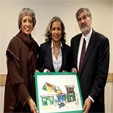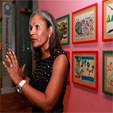Ancillary Activities
Supporting Haiti’s Living Cultural Heritage
Haiti’s cultural heritage is a living one, expressed though the traditions and creativity of its people. Collections of artifacts, documents, paintings and various media have not only historical, aesthetic or scientific value, but also inspire living craft traditions, creative arts, vibrant forms of music, dance, verbal arts and theatrical performance.
The Smithsonian has developed several initiatives to encourage creativity. Staff have organized �artists care packages� of paints, brushes and canvasses to send to Haiti so contemporary artists can continue to paint. More than 100 Haitian artist have received free materials.
The 2010 Smithsonian Folklife Festival purchased $25,000 worth of Haitian crafts from artisans in Port-au-Prince and Jacmel to sell at its festival marketplace on the National Mall in Washington, D.C., June 24-July 5. Proceeds going to craftspeople and artists should help them support their families and produce additional cultural goods for sale. The Festival also featured demonstrations by Haitian visionary painter Levoy Exil and sequined-flag artist Mireille Delism� and a special concert headlined by Boukman Eksperyans and opened by Tines Salvant. These activities helped mobilize the Haitian American community, keep the issue of Haiti�s recovery before the public and invigorate the cultural economy.
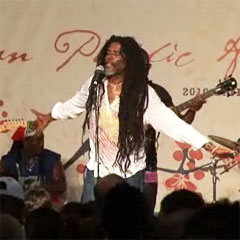
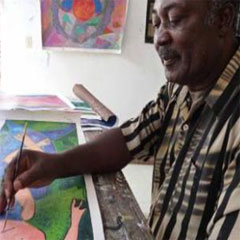
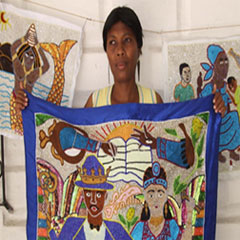
Boukman Eksperyans presents a rousing concert on the National Mall in Washington, while Levov Exil and Mireille Delisme demonstrated their art.
The Smithsonian�s National Museum of African Art opened an exhibition The Healing Power of Art: Works of Art by Haitian Children after the Earthquake in the Ripley Center in Washington, D.C. The exhibition features more than 100 paintings made by children, resulting from a project initiated by first lady of Haiti Elisabeth D. Preval. Following the earthquake, Mrs. Preval called on Haitian artist Philippe Dodard and his fellow artists, as well as psychologists, educators and politicians, to create a safe place for children to express their feelings through art. The exhibition features paintings and drawings created by Haiti’s young people at Plas Timoun (The Children’s Place), arts centers housed in converted buses at two locations in Port-au-Prince. It also features paintings made in Haiti by Elizabeth Preval and first lady Michelle Obama, and Jill Biden when the latter visited Haiti.
The Haiti Cultural Recovery Project has collaborated with The William J. Clinton Presidential Library in Little Rock, Arkansas to present an exhibition, Haiti: Building Back Better from December 3, 2010 to February 6, 2011. The second part of the exhibition examines the rebuilding of Haiti after the earthquake, with special attention to the work of the cultural recovery. On exhibition are mural fragments from the Holy Trinity Episcopal Cathedral.





